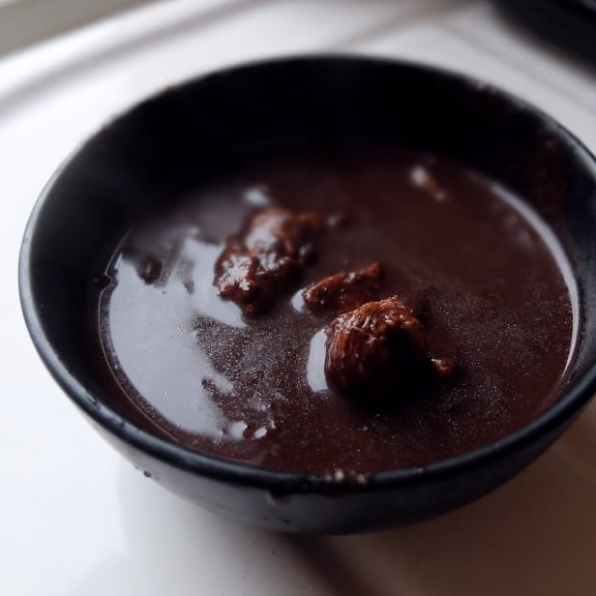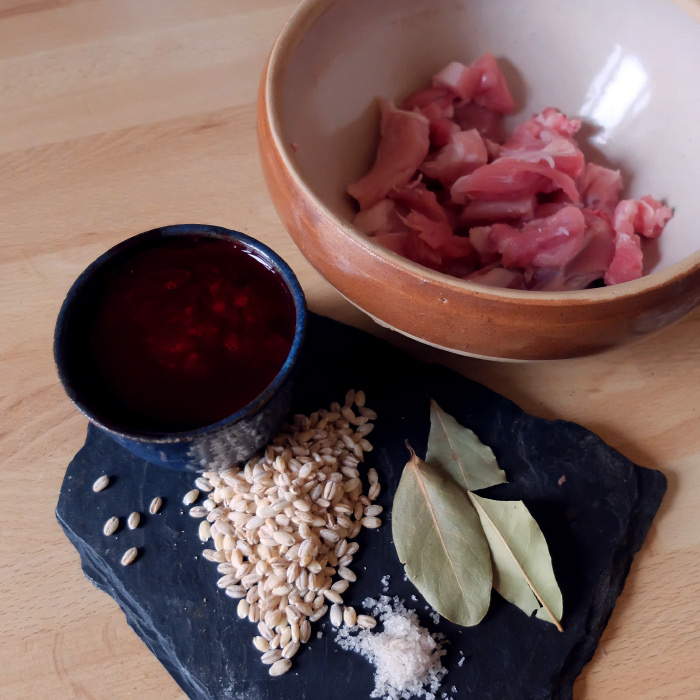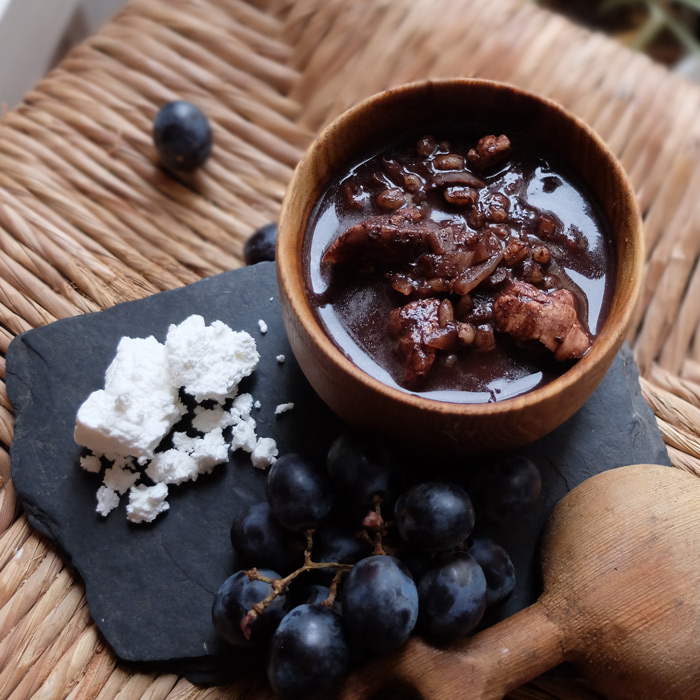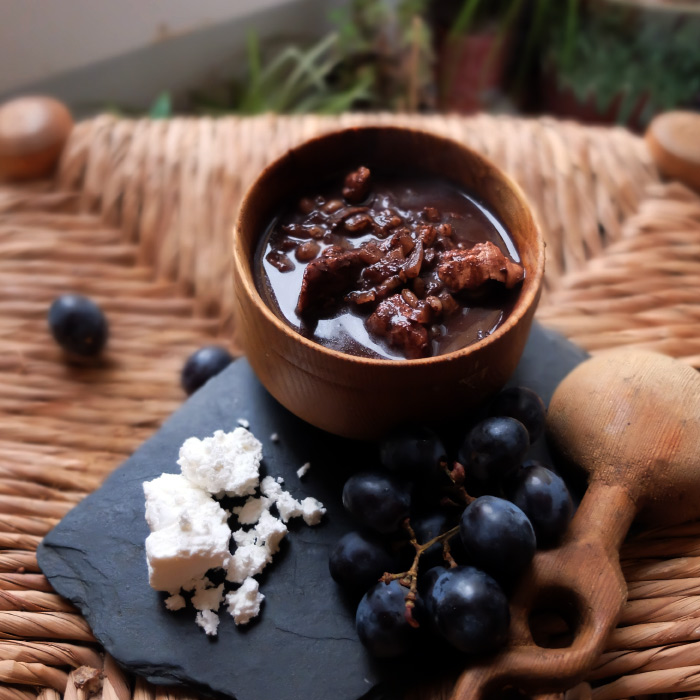This time around, we take a step back to ancient Sparta to bring you the infamous “Black Broth”, Melas Zomos (μέλας ζωμός), a staple dish of the period, made primarily of four simple ingredients: boiled pork shank, fresh blood, salt, and vinegar.

As with most blood touched foods, Melas Zomos has a bit of a poor reputation. Accounts of the dish tend to lean heavily on amusingly dramatic exclamations of abhorrence, rather than actual taste and merit. The sinister hype seems to have strengthened the image of the aggressive and resilient Spartan warrior, but the dish itself continues to suffer from a stigma of distaste. If we push sensation aside, however, we can see that Melas Zomos is a humble, albeit logical effort of necessity; a concoction that simply utilizes parts of an animal that have now become uncommon in many places around the world.
Tragically, no actual recipes for Melas Zomos have survived for us to examine with our beady eyes, and all that remain today are more recent interpretations of the dish. Yet, if we add what we do know about Spartan culture to the mix, we’re given a chance to potentially stitch together something promising. Blood soups are quite ubiquitous, fortunately, and they almost always contain a level of commonality: parts of an animal fresh from slaughter; salt to slow microbial growth and heighten taste; vinegar to dilute, acidify, and limit coagulation; the subsequent bloody mixture used to thicken and finish the dish. It’s a simple equation that, once understood, is fairly easy to replicate.
Blood soups can be be found all around the world, from the vinegar spiked Polish Czernina and Filipino Dinuguan, to the fragrant, curry-like Saksang of Indonesia. It’s safe to surmise that almost every meat-eating culture has had similar dishes at one point in time.
We wanted to stay true to the sober, “Spartan” simplicity of the dish, so we kept our creativity to a minimum with this recipe. To the four base ingredients, we added onions, bay leaves, dried fish (or fish sauce), and a wee bit of barley. Spartan society leaned heavily on agriculture, and barley played a relatively important role in their diet. We took the liberty to assume, therefore, that it was a feasible addition they may have used to substantiate such meager broths and stews. Even if we’re wrong about that, it still adds depth and texture to the dish, so we recommend it.
Anyhow, enough of the history lesson. On to the bloody recipe!
Ingredients:
- 1 lb pork shank
- 1/2 pint pork blood
- 1/2 cup vinegar (we used grape vinegar)
- 1 Tbsp olive oil
- 1/2 tsp salt
- 2 bay leaves
- 1 onion, chopped
- barley (optional)
- a small amount of dried fish, such as mackerel or sardines, or a splash of fish sauce (optional, again, but highly recommended!)

Method:
- Set a large stock pot over medium heat. Add the olive oil and onions and cook until tender and lightly brown, about 10 minutes. If using barley, add it with the onions and toast it lightly.
- Add the chopped pork (and fish, if using) to the pot and cook for another 10 minutes. Searing the meat carefully will add a good amount of flavor to the dish, but try not to burn the fond on the bottom of the pot if doing so, as it will add a burnt flavor to your soup (the sugars in the onion love to burn).
- Deglaze the pan with the vinegar, add about 3-4 cups of water, a couple bay leaves, and the salt. Once the mixture is boiling, lower the heat to medium low and simmer, covered, for about 45 minutes to an hour (the longer, the better).
- When the pork is cooked through and tender, add the blood, and allow to simmer for about 10-15 minutes more while stirring constantly. If the soup begins to thicken too much, you can remedy the issue with a little more water.
- Adjust the final flavor to your liking and serve warm with preferred accompaniments.

Notes and Tips:
As stated above, the main issue with the dish is that it’s a bit bland in basic form, and would certainly benefit from more flavoring, whether provided by traditional ingredients or local improvisation.
Borrowing from the more…”indulgent” ancient Roman cuisine, we could add garum (fish sauce), parsley, black pepper, even a touch of honey and red wine.
Traditionally, Melas Zomos may have been served with fresh fruits such as figs, grapes, and oranges, and accompanied by fresh cheese and watered down wine.

